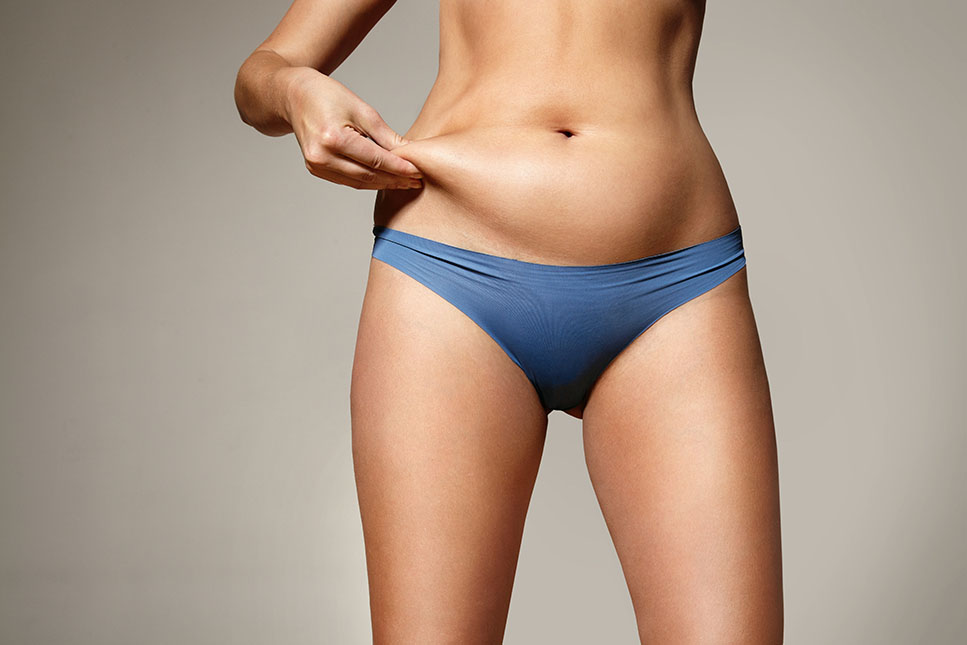What is Autologous Fat Grafting?
Autologous fat grafting is an excellent procedure if you are looking to minimize the appearance of deep facial wrinkles, creases, furrows, sunken cheeks, skin depressions and certain types of scars. This procedure can also be used to add fullness to your lips, hands or buttock.
Autologous fat grafting uses your own fat supply. By using your own fat, the risk of rejection is low, and there is no chance of allergic reaction. Autologous fat implants tend to be permanent; however, over time, they may dissipate with fat being reabsorbed back into your system. As a result, subsequent procedures may be needed. Dr. Michael Epstein performs fat grafting to patients all over Chicago including surrounding areas of Evanston and Buffalo Grove, IL. Dr. Epstein is a top surgeon in the area who has performed numerous fat grafting procedures for patients to get the results they are looking for.

How is Autologous Fat Grafting in Chicago performed?
Autologous fat grafting is an outpatient surgical procedure performed at our facility. This procedure can be done under local anesthesia or sedation, depending on the complexity of the procedure. Dr. Epstein starts by liposuctioning fat from a fat-rich part of the body, such as the thighs, abdomen or buttocks. The fat is then cleaned, excess fluid is removed, and a small needle is used to inject the fat into the areas being treated. This Chicago procedure takes approximately one to two hours, depending on the size of the areas to be treated.
What to expect during the Fat Grafting recovery period:
- Minor discomfort is normal and can be controlled with medication,
- Redness, bruising and swelling are normal and will dissipate within a couple of weeks.
- You can return to light activity in 1 day.
- You can return to full activity in 3-5 days.
FAQs for Fat Grafting | MAE Plastic Surgery
How much does fat grafting cost?
The cost for your fat grafting depends upon factors such as your aesthetic concerns and recipient site. For instance, if you want to enhance various aspects of your figure, the process will require more time and effort from your treatment providers and cost more than a simple lip augmentation.
At MAE Plastic Surgery, Dr. Epstein and our team make sure to understand your most pressing concerns and present suitable solutions to resolve them. This also holds true for your fat grafting needs. After noting your goals from the treatment, we provide you with a detailed breakdown of costs for your fat grafting procedure. This will help to keep clear of any surprises while also letting you access financing options if you need them.
How long do fat grafts last?
Fat grafts are long-lasting and may easily remain in place for many years. Once your own fat cells are transferred to another area of your body, they have varying degrees of survival and this is dependent upon a number of factors such location of the recipient site, age, and health of the patient. After fat grafting has been performed we can usually tell how much of the fat survived after 4-6 months. The fat that survives will often take on the characterisics of the location that it was receieved and the fat that does’t make it will break down and become absorbed naturally. On average about 50% of the fat that is injected in an area will survive and essentially be there forever.
The actual duration of fat graft results depends upon various aspects including your treatment site, your body’s response to the fat graft, and your experience with the natural effects of aging. By discussing your concerns with Dr. Epstein and our team, you can get a more detailed answer that is specific to your treatment procedure.
Who is a good candidate for fat grafting?
A good candidate for fat grafting has traits including but not limited to:
- Deep wrinkles across the face
- Creases between the eyebrows
- Scarring and depressions across the skin
- Volume loss in facial or body features
- Personal preference to augment facial or body features such as the breast or buttocks
- Realistic expectations from the procedure
- Good overall health
- At least 18 years of age
- Willingness to quit smoking before the treatment and during the recovery process
What are the disadvantages of fat transfer?
The disadvantages of fat transfer may include:
- You will have downtime, or recovery time, of a few weeks, depending on the recipient site
- There are limitations in the amount of fat that can be harvested and injected
- The fat that is grafted varies in survival rates
During the recovery period, you may also experience common side effects such as redness, bruising, and pain. But these effects subside on their own as you recover from your treatment. Dr. Epstein and our team guide you through these possibilities and help you take care of yourself through targeted aftercare instructions.
Should I lose weight before fat transfer?
You typically do not need to lose weight solely for fat transfer. Since the procedure requires experts to harvest fat from specific sites of your body and inject them in other areas, it is important that you have sufficient fat available in the donor site. If you have any questions about losing fat after your treatment, you may discuss them with your provider.
After a detailed consultation, Dr. Epstein and our team can provide you with personalized suggestions on weight management while also keeping your needs for fat grafting in mind.
Does fat grafting leave scars?
When fat grafting is performed in the face there are virtually no scars because the donor and recipient areas are entered with through a small discreet puncture site. When your fat grafting is done via liposuction, and larger volumes of fat are needed, you may experience small scars across the donor site. Overtime, these scars may fade away to the point of becoming unnoticeable.
Dr. Epstein and our team provide you with detailed aftercare instructions to minimize scarring after your procedure.
What can you not do after fat grafting?
Right after fat grafting, you should refrain from indulging in physically strenuous activities for a few weeks. You should also stay away from smoking and other nicotine products and refrain from consuming alcohol since these habits interfere with your body’s natural healing processes.
Dr. Epstein and our team can provide you with specific aftercare instructions that let you avoid any activities that may impede your recovery.
How do I prepare for fat grafting?
To prepare for fat grafting, you may need to take the following steps:
- Take time off work as advised by your surgeon
- Get a family member or friend to help you during your recovery
- Stop smoking at least a week before your fat grafting appointment
- Take a shower before your surgery
- Avoid putting any creams or lotions around the donor site and treatment areas
- Follow additional preparation instructions provided to you by your medical team
At MAE Plastic Surgery, Dr. Epstein and our team offer a list of preparation suggestions to help you get ready for your fat grafting treatment with confidence and comfort.





